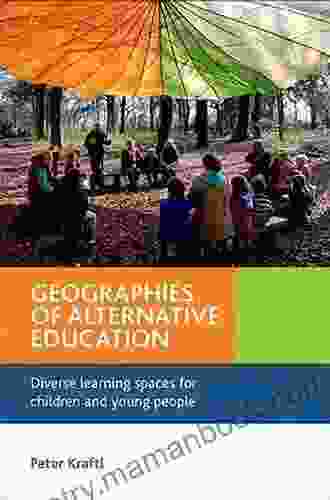Diverse Learning Spaces: Fostering Inclusivity and Academic Success for All

In the 21st century, education has evolved to embrace a diverse and inclusive approach that recognizes and accommodates the unique learning styles and needs of all students. Diverse learning spaces play a pivotal role in creating equitable and engaging learning environments that cater to the varying abilities, cultural backgrounds, and social-emotional needs of children and young people. This article delves into the concept of diverse learning spaces, exploring their benefits, design principles, and implementation strategies.
Defining Diverse Learning Spaces
Diverse learning spaces are physical and virtual environments that provide multiple modalities of learning, activities, and resources to meet the diverse needs of learners. They are designed to foster inclusivity, flexibility, collaboration, and student-centered learning. These spaces go beyond traditional classrooms and encompass a range of settings, including:
5 out of 5
| Language | : | English |
| File size | : | 2991 KB |
| Text-to-Speech | : | Enabled |
| Screen Reader | : | Supported |
| Enhanced typesetting | : | Enabled |
| Word Wise | : | Enabled |
| Print length | : | 306 pages |
- Traditional classrooms with flexible seating arrangements and technology integration - Small group learning areas for collaboration and peer support - Sensory rooms for students with sensory processing challenges - Outdoor learning environments for hands-on experiences - Library spaces with diverse materials, quiet zones, and collaborative areas - Virtual learning platforms that offer personalized learning paths and accessibility features
Benefits of Diverse Learning Spaces
Diverse learning spaces offer numerous benefits for children and young people:
1. Enhanced Learning Outcomes:By providing a variety of learning experiences and resources, diverse spaces empower students to learn in ways that best suit their preferred learning styles. This leads to improved engagement, knowledge retention, and academic achievement.
2. Inclusivity and Equity:Diverse learning spaces create an environment where all students feel valued and included. They accommodate students with different learning needs, abilities, and cultural backgrounds, enabling them to participate fully in the learning process.
3. Social and Emotional Development:Diverse learning spaces promote social interaction and collaboration, developing students' interpersonal skills, empathy, and a sense of belonging. They create a supportive and nurturing environment that fosters students' well-being.
4. Personalized Learning:These spaces allow for personalized and differentiated instruction, allowing teachers to tailor learning experiences to the individual needs of students. Students can choose activities, resources, and environments that best facilitate their learning.
5. Innovation and Creativity:Diverse learning spaces encourage innovation, creativity, and problem-solving skills. They stimulate students' imagination and provide opportunities for hands-on, experiential learning.
Design Principles of Diverse Learning Spaces
Effective diverse learning spaces follow several key design principles:
1. Flexibility:Spaces should be adaptable to accommodate different learning activities, group sizes, and individual needs. Furniture, lighting, and acoustics should be adjustable to create various settings.
2. Sensory Considerations:Spaces should cater to different sensory needs by providing sensory-rich areas with calming colors, soft materials, and controlled lighting.
3. Technology Integration:Technology tools should enhance learning experiences by providing accessibility features, personalized content, and interactive simulations.
4. Collaboration and Communication:Spaces should encourage collaboration and communication through shared workspaces, group tables, and video conferencing facilities.
5. Inclusivity and Representation:Spaces should represent the diversity of the student population through artwork, books, and resources that reflect different cultures, perspectives, and identities.
Implementation Strategies for Diverse Learning Spaces
Implementing diverse learning spaces requires a comprehensive approach:
1. Assessment and Planning:Conduct a needs assessment to identify the specific needs and strengths of the students. Develop a plan that outlines space design, resource allocation, and instructional strategies.
2. Collaboration and Partnerships:Engage with educators, administrators, students, and parents to gather input and ensure a shared vision for diverse learning spaces. Foster partnerships with external organizations to provide specialized resources and expertise.
3. Professional Development:Provide professional development opportunities for educators to develop skills and knowledge in differentiated instruction, universal design for learning, and trauma-informed practices.
4. Ongoing Evaluation and Improvement:Regularly evaluate the effectiveness of diverse learning spaces and make adjustments based on feedback from students, educators, and administrators. Seek ongoing improvement to ensure that spaces remain responsive to evolving student needs.
Case Studies and Best Practices
Numerous schools and organizations have successfully implemented diverse learning spaces. Here are a few case studies and best practices:
- The Woodlands School in Texas: This school has created a sensory garden and a sensory-rich indoor space called the "Cozy Room" to support students with sensory processing challenges. - The Kaleidoscope School in New York City: This school has adopted a "flexible classroom" model that uses movable walls, flexible seating, and technology to create adaptable learning environments. - The Creative Media and Digital Arts School in South Carolina: This school has partnered with a local college to provide students with access to high-tech equipment and industry professionals. - The Boys & Girls Clubs of America: This organization has implemented "Safe Spaces" in their after-school programs, providing respite areas for students to de-stress and engage in positive activities.
Diverse learning spaces are essential for fostering inclusivity, equity, and academic success for children and young people. By embracing the principles of flexibility, sensory considerations, technology integration, collaboration, and inclusivity, educators and administrators can create environments that empower all learners to reach their full potential. The implementation of diverse learning spaces requires a comprehensive approach involving assessment, collaboration, professional development, and ongoing evaluation. Educators should strive to create spaces that reflect the diversity of their students and provide them with the opportunity to learn in ways that best suit their individual needs and learning styles. By providing diverse learning spaces, we can create a more just and equitable education system that values and supports all learners.
5 out of 5
| Language | : | English |
| File size | : | 2991 KB |
| Text-to-Speech | : | Enabled |
| Screen Reader | : | Supported |
| Enhanced typesetting | : | Enabled |
| Word Wise | : | Enabled |
| Print length | : | 306 pages |
Do you want to contribute by writing guest posts on this blog?
Please contact us and send us a resume of previous articles that you have written.
 Top Book
Top Book Novel
Novel Fiction
Fiction Nonfiction
Nonfiction Literature
Literature Paperback
Paperback Hardcover
Hardcover E-book
E-book Audiobook
Audiobook Bestseller
Bestseller Classic
Classic Mystery
Mystery Thriller
Thriller Romance
Romance Fantasy
Fantasy Science Fiction
Science Fiction Biography
Biography Memoir
Memoir Autobiography
Autobiography Poetry
Poetry Drama
Drama Historical Fiction
Historical Fiction Self-help
Self-help Young Adult
Young Adult Childrens Books
Childrens Books Graphic Novel
Graphic Novel Anthology
Anthology Series
Series Encyclopedia
Encyclopedia Reference
Reference Guidebook
Guidebook Textbook
Textbook Workbook
Workbook Journal
Journal Diary
Diary Manuscript
Manuscript Folio
Folio Pulp Fiction
Pulp Fiction Short Stories
Short Stories Fairy Tales
Fairy Tales Fables
Fables Mythology
Mythology Philosophy
Philosophy Religion
Religion Spirituality
Spirituality Essays
Essays Critique
Critique Commentary
Commentary Glossary
Glossary Bibliography
Bibliography Index
Index Table of Contents
Table of Contents Preface
Preface Introduction
Introduction Foreword
Foreword Afterword
Afterword Appendices
Appendices Annotations
Annotations Footnotes
Footnotes Epilogue
Epilogue Prologue
Prologue April Falcon Doss
April Falcon Doss 1st Edition Kindle Edition
1st Edition Kindle Edition Kerry Gleason
Kerry Gleason Keith Dinnie
Keith Dinnie Helen Moon
Helen Moon Emma Savant
Emma Savant Tom Conklin
Tom Conklin Darryl Cunningham
Darryl Cunningham Forrest Gander
Forrest Gander Mary Jane Maguire Fong
Mary Jane Maguire Fong Ian Probert
Ian Probert Jane Patrick
Jane Patrick Tom Peashey
Tom Peashey Arrl Inc
Arrl Inc Wade Bourne
Wade Bourne Catherine Cho
Catherine Cho Melinda Metz
Melinda Metz Karen Sue Powell
Karen Sue Powell Jo Bryson
Jo Bryson Peter Montiel
Peter Montiel
Light bulbAdvertise smarter! Our strategic ad space ensures maximum exposure. Reserve your spot today!
 Jerome BlairFollow ·13.3k
Jerome BlairFollow ·13.3k Griffin MitchellFollow ·8.5k
Griffin MitchellFollow ·8.5k Javier BellFollow ·13.9k
Javier BellFollow ·13.9k Wesley ReedFollow ·14k
Wesley ReedFollow ·14k Henry HayesFollow ·15.1k
Henry HayesFollow ·15.1k Chase MorrisFollow ·17.9k
Chase MorrisFollow ·17.9k William PowellFollow ·9.4k
William PowellFollow ·9.4k Dion ReedFollow ·8.2k
Dion ReedFollow ·8.2k

 Patrick Hayes
Patrick HayesDeath on Stage: Euphemia Martins Mystery 16
Synopsis In the...

 Benji Powell
Benji Powell1001 Best Baking Recipes Of All Time
Baking is a fun and...

 Terry Bell
Terry BellDestined War of the Covens: A Supernatural Saga of Power,...
Welcome to the...

 Mark Twain
Mark TwainBitcoin For Mere Mortals: A Comprehensive Guide for...
Bitcoin is a...

 Dennis Hayes
Dennis HayesThe Best Budget Gaming PC 2024: Build the Ultimate Gaming...
Are you looking to build the best budget...
5 out of 5
| Language | : | English |
| File size | : | 2991 KB |
| Text-to-Speech | : | Enabled |
| Screen Reader | : | Supported |
| Enhanced typesetting | : | Enabled |
| Word Wise | : | Enabled |
| Print length | : | 306 pages |













